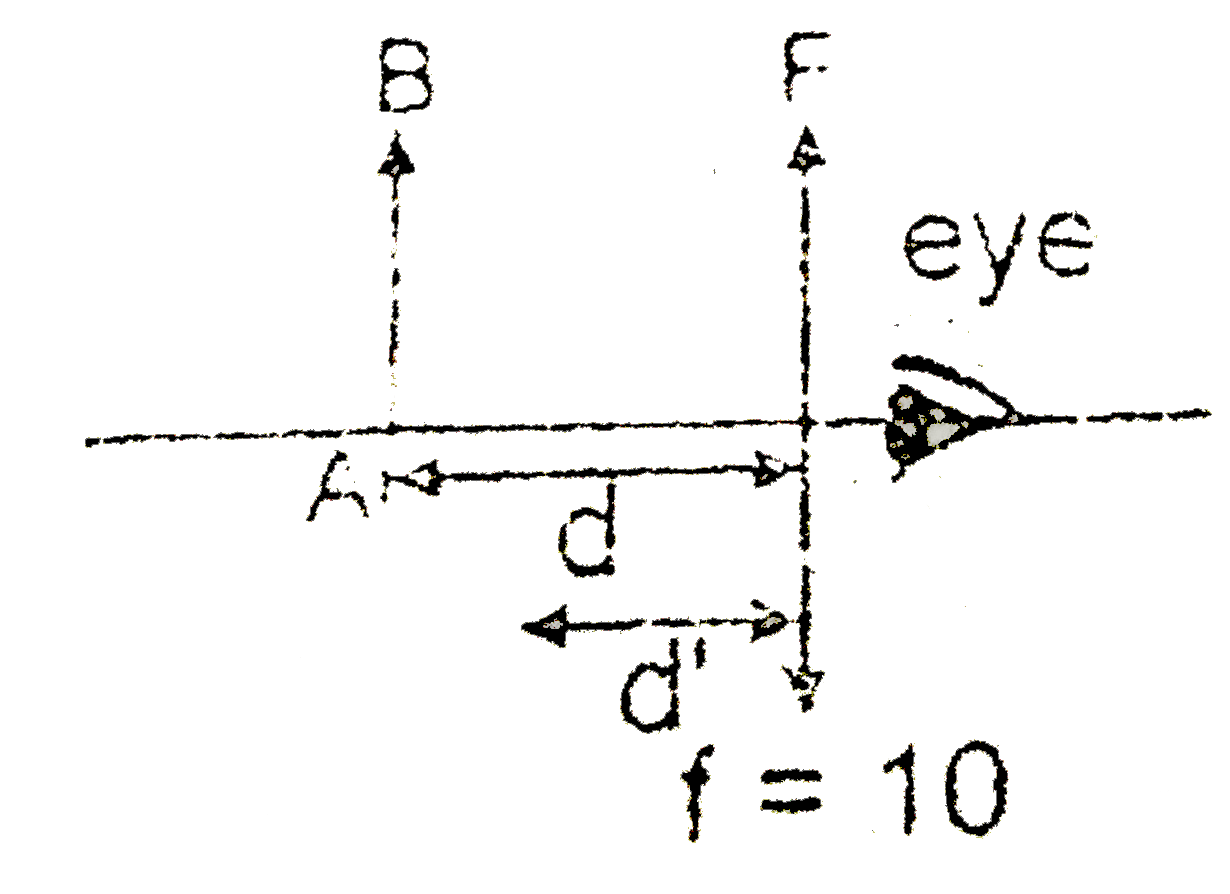A young boy can adjust the power of his eye lens between 50 D and 60 D. His far point is infinity. A. What is the distance of his retina from the eye-lens? b. What is the near point?
a. When the eye is fuly relaxed, its focal length is largest and the power of the eye lens is minimum. This power is 50 D according to the given data. The focal lengts is As the far point is at infinity, the parallel rays coming from infinity are focussed on the retiN/A in the fuly relaxed condition. HEnce, the distance of the retinN/A from the lens equals the focal length which is 2 cm.
b. when the eye is focussed at the near point, the power is maximum which is 60 D. the focal lenth in this case is 1/v-1/u=1/f1/u=1/v-1/f=1/(2cm)-3/(5cm)u=-10cm
The near point is at 10 cm
Topper's Solved these Questions
- BOOK - HC VERMA ENGLISHCHAPTER - OPTICAL INSTRUMENTSEXERCISE - Objective -111videos
OPTICAL INSTRUMENTS
- BOOK - HC VERMA ENGLISHCHAPTER - OPTICAL INSTRUMENTSEXERCISE - Objective-25videos
OPTICAL INSTRUMENTS
- BOOK - HC VERMA ENGLISHCHAPTER - OPTICAL INSTRUMENTSEXERCISE - Question for short Answer12videos
OPTICAL INSTRUMENTS
- BOOK - HC VERMA ENGLISHCHAPTER - MAGNETIC PROPERTIES OF MATTEREXERCISE - Short Answer6videos
MAGNETIC PROPERTIES OF MATTER
- BOOK - HC VERMA ENGLISHCHAPTER - PERMANENT MAGNETSEXERCISE - Short Answer11videos
PERMANENT MAGNETS
Similar Questions
For a normal eye, the cornea of eye provides a converging power of 40D and the least converging power of the eye lens behind the cornea is 20D. Using this information, the distance between the retina and the cornea eye lens can be estimated to be
View SolutionFor a normal eye, the cornea of eye provides a converging power of 40D and the least converging power of the eye lens behind the cornea is 20D. Using this information, the distance between the retina and the cornea eye lens can be estimated to be
View SolutionThe near point and the far point of a child are at 10 cm and 100 cm. If the retina is 2.0 cm behind the eye-lens, what is the range of the power of the eye-lens?
View SolutionA person can see objects clearly only when they lie between 50cm and 400cm from his eyes. In order to increase the maximum distance of distinct vision to infinity, the type and power of the correcting lens, the person has to use, will be
View SolutionA person can see clearly objects only when they lie between 50 cm and 400 cm from his eyes. In order to increase the miximum distance of distinct vision to infinity , the person has to use, will be
View SolutionIf the eye is kept very close to a coverging lens (focal length =10cm) and at the optical centre of the lens and an object is kept at distance 'd' of the object from the lebs so that its image can be seen clearly by the defect free eye is :
 .View Solution
.View SolutionIf the eye is kept very close to a coverging lens (focal length =10cm) and at the optical centre of the lens and an object is kept at distance 'd' of the object from the lebs so that its image can be seen clearly by the defect free eye is :
 .View Solution
.View SolutionPlane surface of a thin plano-convex lens is silvered. If a point object is placed on principal axis at a distance 60cm from the lens and fial image is formed at a distance 30cm from the lens on same side. What will be the distance of final imagge from the lens if the plane surface is not silvered.
View SolutionA boy hears an echo of his own voice from a distant hill after one second. The speed of sound in air is 350 m s−1. What is the distance of the hill from the boy?
View SolutionThe far point of a myopic person is 80 cm in front of the eye. What is the nature and power of the lens required to correct the problem?
View Solution

